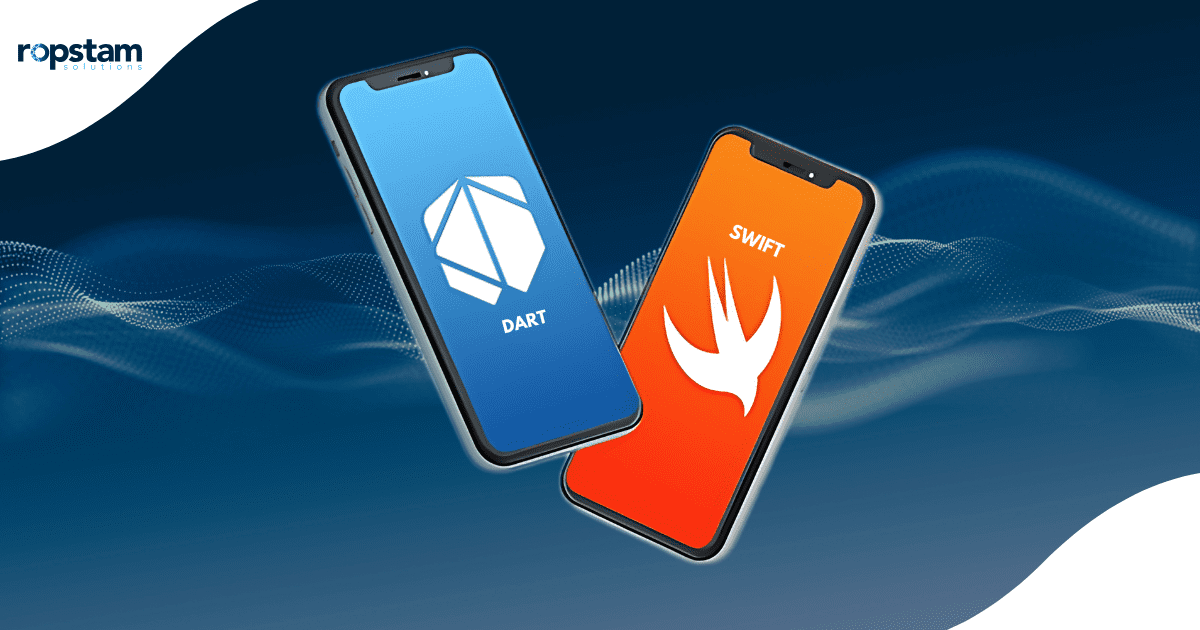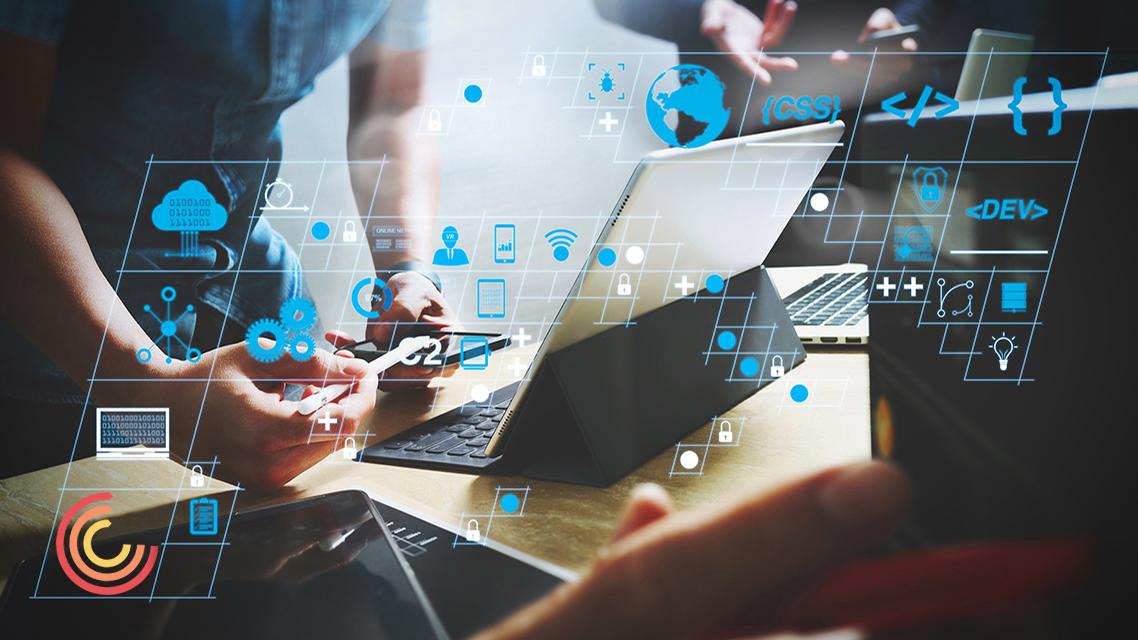When it comes to iOS app development, choosing the right programming language is essential for delivering a smooth user experience. Two popular options in this area are Dart and Swift. Swift is Apple’s native language for iOS development, while Dart, primarily associated with Flutter, is gaining popularity due to its cross-platform capabilities. The performance of Dart and Swift is exceptionally comparable, and they share several similar language features. However, how do you determine which language is best for iOS app development?
In this article, we will compare Swift and Dart for iOS development by evaluating their similarities, differences, pros, and cons to assist you in making the right choice.
What is Dart
Dart, a cutting-edge programming language developed by Google, empowers developers to quickly create scalable, high-performance applications. While it is best known as the backbone of Flutter—a highly popular framework for crafting cross-platform apps—Dart stands out on its own. It offers a complete set of features that allows the development of stunning, natively compiled applications across diverse platforms, including iOS. By choosing Dart, developers can unlock the potential to build visually captivating and responsive applications that deliver exceptional user experiences, all while simplifying the development process.
Key Features of Dart
- Cross-Platform: Dart is the foundation of Flutter, allowing code reusability across iOS, Android, and web applications.
- Fast Performance: With Ahead-of-Time (AOT) and Just-In-Time (JIT) compilation, Dart guarantees high-speed app execution.
- UI-Centric: Built to prepare visually appealing and dynamic user interfaces.
Pros and Cons of Dart
Pros:
- Cross-Platform Flexibility: Write code once and deploy it on multiple platforms, saving time and resources.
- Hot Reload: Dart’s ‘hot reload’ feature lets developers instantly see the effects of code changes in real-time without restarting the app. This streamlines the development process and is a significant advantage for rapid prototyping and iterative development.
- Robust Ecosystem: With Flutter’s extensive libraries and widgets, Dart simplifies UI creation.
- Active Community Support: A growing developer community guarantees continuous improvement and troubleshooting assistance.
Cons:
- Learning Curve: Dart is relatively new, so developers with prior Swift experience might need extra time to adapt. However, for developers familiar with JavaScript or Java, Dart’s learning curve is considered less steep than Swift’s.
- Lesser Native Feel: While efficient, cross-platform apps developed with Dart sometimes lack the platform-specific design and interaction patterns that give native iOS apps their unique look and feel. This is a consideration for apps where the user experience is a top priority.
- Limited Libraries: Unlike Swift, Dart’s library ecosystem for native iOS development can feel restricted.
- Dependency on Flutter: Although Dart can be used independently, it primarily shines within Flutter. Without Flutter, its adoption for other use cases may be limited.
What is Swift
Apple introduced Swift in 2014. It is a powerful and intuitive programming language for iOS, macOS, watchOS, and TVOS. Swift was created to supersede Objective-C, merging state-of-the-art features with an intuitive design. This innovative programming language is not just powerful; it’s the ideal choice for developers targeting Apple’s ecosystem, ensuring streamlined and efficient app development. Embrace Swift to elevate your coding experience and craft exceptional applications with ease.
Key Features of Swift:
- Native Development: Optimized for seamless integration with Apple’s hardware and software.
- Performance-Driven: Swift provides near-native performance for iOS applications.
- Modern Syntax: Swift’s concise and expressive syntax reduces boilerplate code, enhances readability, and minimizes coding errors, making development efficient.
- Security and Stability: Swift’s strong type-checking and memory management features guarantee safer and more stable code, reducing runtime crashes.
Pros and Cons of Swift
Pros:
- Apple-Endorsed: Swift is purpose-built for Apple devices, offering full iOS SDK and tools access.
- Native Look and Feel: Apps developed with Swift deliver a polished and consistent user experience.
- Robust Performance: Its native compilation guarantees fast execution and high reliability.
- Wide Adoption: A large developer base guarantees extensive resources, tutorials, and third-party tools.
Cons:
- Limited to Apple Platforms: While excellent for iOS, Swift is not a viable option for non-Apple platforms.
- No Cross-Platform Support: Developers must write separate Android or web codebases.
- Resource-Intensive for Beginners: Developing Swift requires a macOS environment, and beginners might face challenges accessing necessary resources like Xcode without Apple hardware.
- Learning Curve: New developers might find Swift challenging initially, especially without a background in iOS development.
When to choose Dart
Dart emerges as a powerful solution for iOS development, particularly for those seeking cross-platform capabilities. Its remarkable ability to build high-performance applications across various platforms without sacrificing speed is a game-changer. With a unified codebase, developers can significantly reduce development time and costs, making Dart an exceptional choice for startups and businesses targeting diverse audiences. By choosing Dart, you position your team for success and innovation in a competitive marketplace.
It’s ideal for:
- Prototyping: Need a quick MVP for iOS and Android.
- Unified Teams: Single team for both iOS and Android development.
- Startups or MVPs: Quickly launching an app on iOS and Android with a shared codebase.
- UI-Centric Projects: When the app requires custom UI elements and interactive designs.
- Budget Constraints: Reducing costs using a single development team for multiple platforms.
When to choose Swift
Swift is the ultimate choice for those prioritizing native performance and smooth integration within Apple’s ecosystem. Its remarkable speed and efficiency make it the go-to language for applications that demand top-tier performance. By choosing Swift, you can unlock the full potential of Apple’s hardware and software, improving functionality and user experience. If your goal is to develop an iOS-exclusive app, you’ll find that Swift offers exceptional benefits, making you create complete, high-end-performance applications that resonate with users. Choose Swift to elevate your app development to new heights!
It’s ideal for :
- Performance-Critical Apps: Games, AR/VR, and high-performance apps.
- iOS-Exclusive Apps: Apps designed solely for Apple’s ecosystem. This is for apps explicitly personalized for iOS, macOS, or other Apple devices.
- Hardware Integration: Deep integration with Apple devices like the camera or sensors.
- You Need Optimal Performance: Apps requiring fast execution and heavy computational tasks.
- You Aim for Long-Term Scalability: Swift’s continuous updates and Apple’s support guarantee future-proof development.
The Verdict
In the constantly changing world of iOS app development, the decision between Dart and Swift depends on your project’s objectives, target audience, and available resources. Dart’s capability for cross-platform development and quick iteration makes it ideal for companies aiming to reach multiple platforms efficiently. Conversely, Swift’s native efficiency and smooth integration with Apple’s ecosystem positions it as the best option for developing refined, high-quality iOS applications. By comprehending the advantages and drawbacks of each language, you can make an informed choice that aligns with your vision, paving the way for a fruitful and meaningful app development experience.













